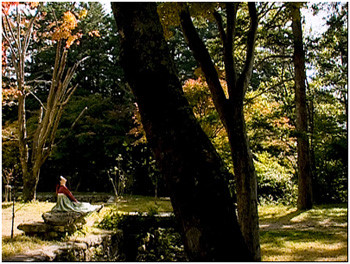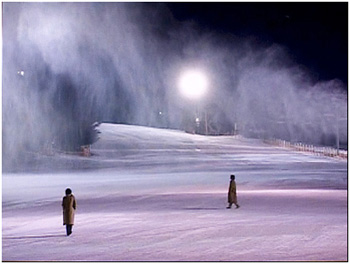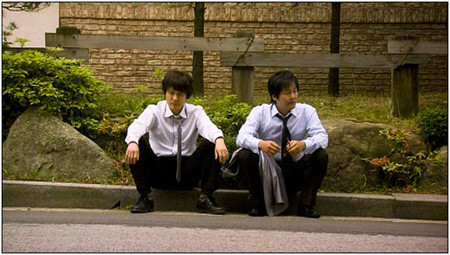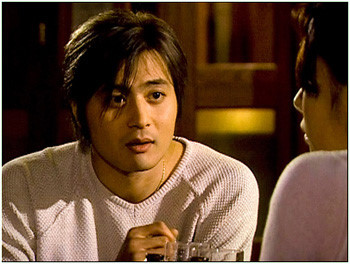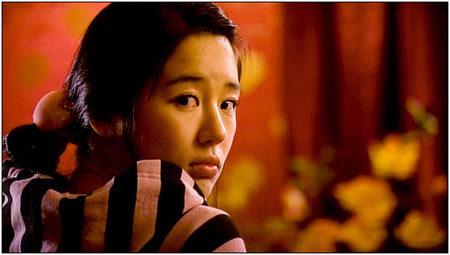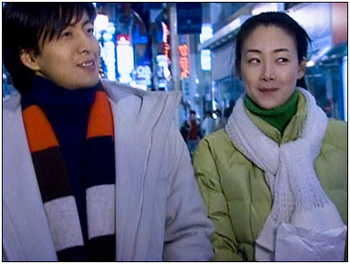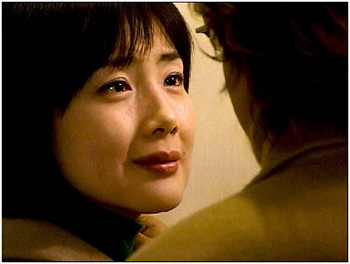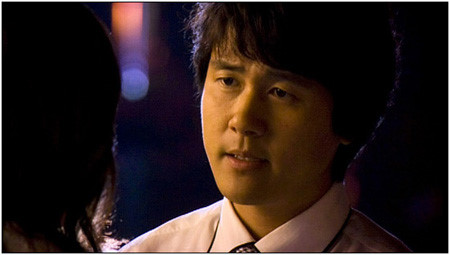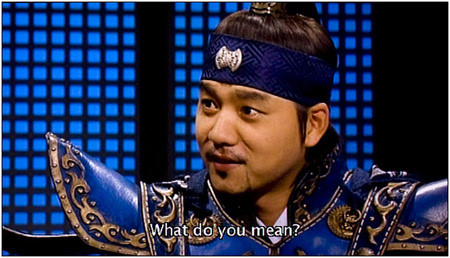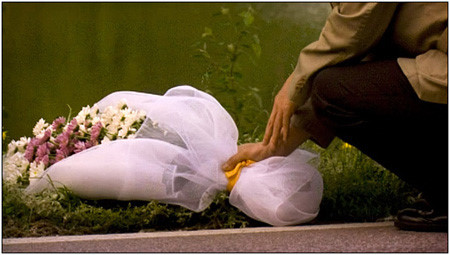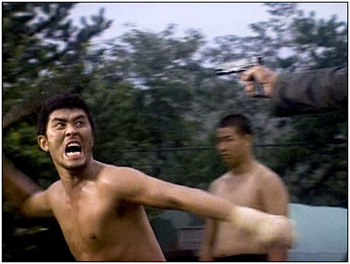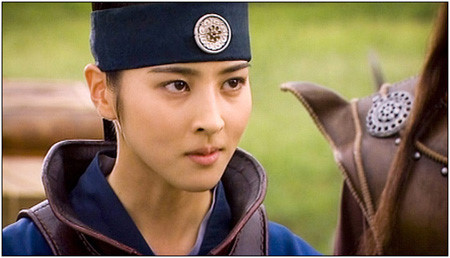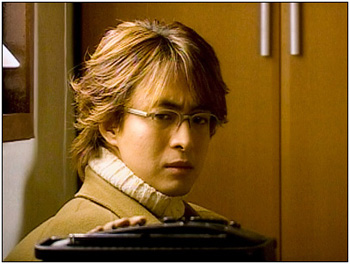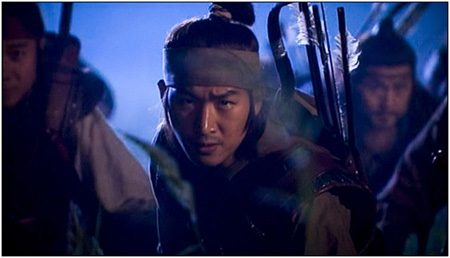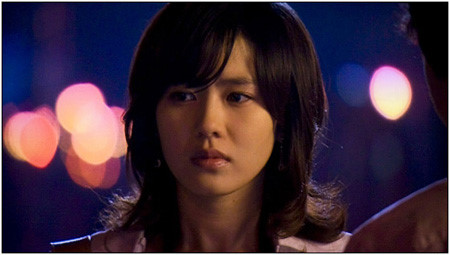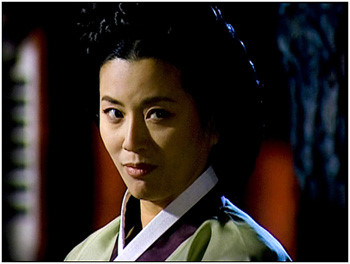The Korean Wave
Or How I Stopped Worrying and Learned to Love Korean Drama
(With sincere thanks to Tom Larsen of YA-Entertainment for his invaluable help in preparing this article.)
It was about three years ago that I was introduced to the concept of region-free DVD playback, an almost necessary condition for readers of DVD Beaver. As a result, a whole world of Asian film that was heretofore unknown to me or out of my reach opened up. I had already absorbed decades of Kurosawa and, more recently, a smattering of classic Hong Kong gangster and fantasy films by way of our local Hong Kong Film Festival. Of Korean films, I knew nothing. But over the next couple of months, with my new and surprisingly cheap multi-region DVD player, I was immersed in beautiful DVD editions of Oldboy, Peppermint Candy, Memories of Murder, Sisily 2Km, Taegukgi, Into the Mirror, Oasis and Sympathy for Mr. Vengeance – with lots more following close on their heels. This was a whole new world of cutting edge cinema to me.
Korean Dramas mentioned in this article (all are NTSC and have English subtitles)
A few months into this adventure, a friend lent me a copy of the first disc of the Korean television series, Dae Jang Geum. He claimed that the drama had just finished a six month's run as the most popular Korean television series ever, and that the new English subtitles by YA-Entertainment were quite readable. "Maybe you'll like it, maybe not." He knew my tastes pretty well by then, but the idea of a television series, let alone one made for Korean mainstream TV, was hardly something that lit the obligatory fire under me. After two episodes, I was hooked.
I understood my fascination with Korean cinema, but television! This was a mystery. How could this be, I puzzled? I wasn't all that hooked on American TV. West Wing, Sopranos, Buffy – sure. Maybe I had pan-tastes, but I still thought of myself as discriminating. So, what was the attraction – one might even say, compulsion that persists to this day? Over the last couple of years I have watched, faithfully, eight complete series, in historical and contemporary settings - each one averaging 20 hours - and I'm halfway into Jumong, which is over 80 hour long episodes! What is my problem!
Though there are obvious similarities to Western primetime dramas, cable and even daytime soaps, Korean primetime television dramas - which they commonly call "miniseries" because the West already had a handy, if not altogether accurate term - are a unique art form. They are structured like our miniseries in that they have a pre-ordained beginning, middle and end. While much longer than our miniseries – even the episodes are a whole hour long, not counting commercials, which are usually front loaded before the episode begins - they do not go on for five, six or seven seasons, like Alias or Star Trek: Voyager, or for generations, like The Days of Our Lives. The closest thing we have to Korean dramas is perhaps any given season of The Wire. Primetime television in Korea is pretty much nothing but dramas and news. So Korea's three very competitive networks (MBC, KBS and SBS) have gotten very good at it over the years, especially since the early 1990s when the government eased its censorship about content, which in turn got their creative juices going.
Korean dramas were jump-started in 1991 by the hugely successful Eyes of Dawn, set between the Japanese invasion of WWII and the Korean War of the early 1950s. In 1995 the highly acclaimed series, The Sandglass, made it clear to an audience outside of the country that Korea was certainly onto something. The Sandglass deftly and intelligently melded the world of organized crime and the ever-present love story against the backdrop of what was then recent Korean political history, particularly the events of 1980 known as the Gwang-ju Democratization Movement and the government's crushing military response (think: Tienamin Square.) But it wasn't until 2002, with Yoon Suk-Ho's Winter Sonata, that what we now call the "Korean Wave" really took off. Winter Sonata very quickly swept over Asia like atsunami, soon landing in Hawaii and then the Mainland, where Korean dramas already had a modest, but loyal following.
Right about then, Tom Larsen, who had previously worked for YesAsia.com, started his own company in San Bruno, California: YA-Entertainment (not to be confused with YesAsia) to distribute the best Korean dramas with proper English subtitles in North America. To this end, YAE (as Tom likes to call his company) secured the necessary licenses to do just that with each of the major Korean networks. I spent a couple of hours with Tom last week talking about our mutual interest. Larsen had first gone to Korea for two years as a volunteer, then came back to the States to finish college where he naturally, but gradually, worked his way into a Korean Language degree at Brigham Young. He came upon his interest in Korean dramas accidentally when one his professors used a then current weekly series to help his students study Korean. An unexpected side effect was that he and his schoolmates became hooked on the drama itself. Larsen has since made several trips to Korea for extended stays. I'll come back to how YAE works shortly, but first I want to try at least to answer the question: Why Korean Dramas?
Purity
Part of the answer, I think, lies in the unique strengths of these shows: Purity, Sincerity, Passion. Perhaps the hallmark of Korean dramas (and, to some extent, in many of their feature films) is a relative purity of character. Each character's psychology and motivation is clear, clean, archetypical. This is not to say they are not complex. Rather a character is not made complicated arbitrarily. Psychological insight into the character, as expressed by his or her behavior, is - I judge - often more correctly manifest than what we see on American television series: Character complexity is more convincing when the core self is not concerned with fulfilling the needs of this or that producer, sponsor or target age range or subculture.
Sincerity
Korea is a damaged and split country, as are many others whose borders are drawn by powers other than themselves, invaded and colonized multiple times over the centuries. Koreans are, therefore, acutely sensitive to questions of divided loyalties. Korean dramas often explore the conflict between the modern and the traditional – even in the historical series. Conflicts of obligations are frequently the prime motivation and focus for the dramatic narrative, often expressed in generational terms within the family. There is something very reassuring about these dramas. . . not in the 1950s happy ending sense, for indeed, there are few happy endings in Korean dramas. Compared to American television shows: Korean TV dramas have simpler, yet compelling story lines, and natural, sympathetic acting of characters we can believe in.
Passion
Perhaps the most arresting feature of the acting is the passion that is brought to performance. There's a good deal of heartfelt angst which, viewed out of context, can strike the unsuspecting Westerner as somewhat laughable. But in context, such expressions of emotion are powerful and engaging, strikinmg to the heart of the conflict. Korean actors and audiences, young or old, unlike our own, are immersed in their country's political context and their history. The emotional connection actors make to the characters they portray has a level of truth that is projected instantly, without the conventional distance we seem to require in the west.
Like the noirish dramas of the 1940s, the characters in a Korean drama have a directness about their greed, their desires, their weaknesses, and their righteousness, and are fully committed to the consequences. It's hard to say if the writing in Korean dramas has anything like the bite and grit of a 40s or 50s American film (given our dependence on a translation, however well-intended) – I rather doubt it. Instead, especially in the historical series, the actors wear their emotional connection to their character on their face as a sort of character mask. It's one of the conventions of Korean drama that we can see clearly what another character cannot, though they are "right there" – sort of like a stage whisper.
I have long been a supporter of the less-is-more school of drama. Not that I prefer a blank stage in modern street clothes, but that too much detail can turn an otherwise involved participant into a passive observer. Also, the more detail, the more chance that I will happen on an error that takes me out of the reality that the art director has so carefully constructed (like the 1979 penny that Chris Reeves finds in his pocket in Somewhere in Time.) Graphic presentations with sensational story lines have a short-term objective: to keep the viewer interested until the next commercial. There is no long-term objective.
A big plus is that the story lines of Korean dramas are, with very few exceptions, only as long as they need to be, after which the series comes to an end. It does not persist with contrived excuses to re-invent its characters. Nor is the length of a series determined by the "television season" as it is in the U.S. K-dramas are not mini-series. Typically, they are between 17-24 hour-long episodes, though some have over 50 episodes (e.g. Emperor of the Sea, Dae Jang Geum, and Jumong).
Korean actors are relatively unknown to American audiences. They are disarming, engaging and, despite their youth or pop status in Korea (as is often the case), are in most cases more skilled than American actors of a similar age. For it is the rule in Korea, rather than the exception, that high profile actors do both television and film. In these dramas, we Westerners have the benefit of getting to know people different from ourselves, often remarkably attractive, which has an appeal in its own right.
Korean dramas have a resemblance to another dramatic form once familiar to us and currently in disrepute: the " melodrama." Wikipedia, describes "melodrama" as coming from the Greek word for song "melody", combined with "drama". Music is used to increase the emotional response or to suggest characters. There is a tidy structure or formula to melodrama: a villain poses a threat, the hero escapes the threat (or rescues the heroine) and there is a happy ending. In melodrama there is constructed a world of heightened emotion, stock characters and a hero who rights the disturbance to the balance of good and evil in a universe with a clear moral division.
Except for the "happy ending" part and an infinite supply of trials for both hero and heroine – usually, the latter - this description isn’t so far off the mark. But more importantly, the idea of the melodrama underscores another essential difference between Korean and Western drama, and that is the role of music. Western television shows and, to a great extent, present day cinema makes use of music in a comparatively casual way. An American TV series will have a signature theme that may or may not – usually not – get worked into the score as a show goes along. Most of the music is there to support the mood or provide additional energy to the action sequences. Not so with Korean dramas - where the music is used more like musical theatre, even opera. Certain themes represent specific characters or relationships between them. The music is deliberately and intensely passionate and can stand on its own. Almost every series has at least one song (not sung by a character) that appears during especially sensitive moments. The lyric is reflective and poetic. Many television soundtrack albums are hugely successful in Asia. The music for Winter Sonata, Seo Dong Yo, Palace and Jumong are all excellent examples.
The setting for a typical Korean drama could be just about anywhere: home, office, or outdoors that have the advantage of familiar and less known locations. The producers of Dae Jang Geum created a small working village and palace for the filming, which has since become a popular tourist attraction. A series could be one or a combination of familiar genres: romances, comedies, political or crime thrillers or historical dramas. While the settings are often familiar, the traditions and, often, the costumes and make-up can be very different from Western shows. Some customs can be fascinating, while others exasperating, even in contemporary settings – as for example, in Winter Sonata, how the female lead character, Yujin, is ostracized by friends and family once she balks on her engagement, a predicament that Korean audiences can really relate to.
Korean TV dramas, like any other art form, have their share of conventions: chance meetings, instant flashback replays, highly fantasized love stories, chance meetings, character masks, chance meetings, all of which can seem like unnecessary time-stoppers to Americans who are used to a fast pace. I recommend not suppressing the inevitable giggle out of some faux-respect, but understand that these things come with the territory. My feeling: If you can appreciate Mozart, you should be able to appreciate the pace and conventionality of Dae Jang Geum. More recent adult dramas like Alone in Love suggest that some of these conventions may have already begun to play themselves out.
Technicals
Episodes arrive at the YAE office in San Bruno on Digital Beta (a 1:1 copy from the master that was used for the actual broadcast) where it is screened for possible imperfections (in which case, the network is asked to send another.) The Beta is downloaded in a lossless format to the computer and a low-resolution copy is sent to the translator. Translation is done in stages: first a Korean-speaking person who knows English, then the reverse. The high-resolution computer master is then tweaked for contrast and color. When the translation is finalized, it is entered into the master, taking care to time the appearance of the subtitle with speech. Then the whole show is screened for further improvements in picture and translation. A DLT (digital linear tape) is constructed which has all the menu instructions and completed picture and subtitles. The DLT is then sent to factories in Korea or Hong Kong for the manufacture of the discs.
Whether the picture is formatted in 4:3 or 16:9, in most cases, the image quality is very good, sometimes exceptional; and the audio (music, dialogue and foley) is clear and dynamic, drawing the audience into the time and place, the story and the characters. For those of us who have made the jump to light speed, we can expect to eventually new drama series in high definition transfers in the not too distant future.
Future Reviews
In the coming months I hope to review one drama series every 4-6 weeks. They will all be available in editions with English subtitles - mostly from YAE, I imagine.
Leonard Norwitz
LensViews
August 18, 2007
Korean Dramas mentioned in this article (all are NTSC and have English subtitles)








